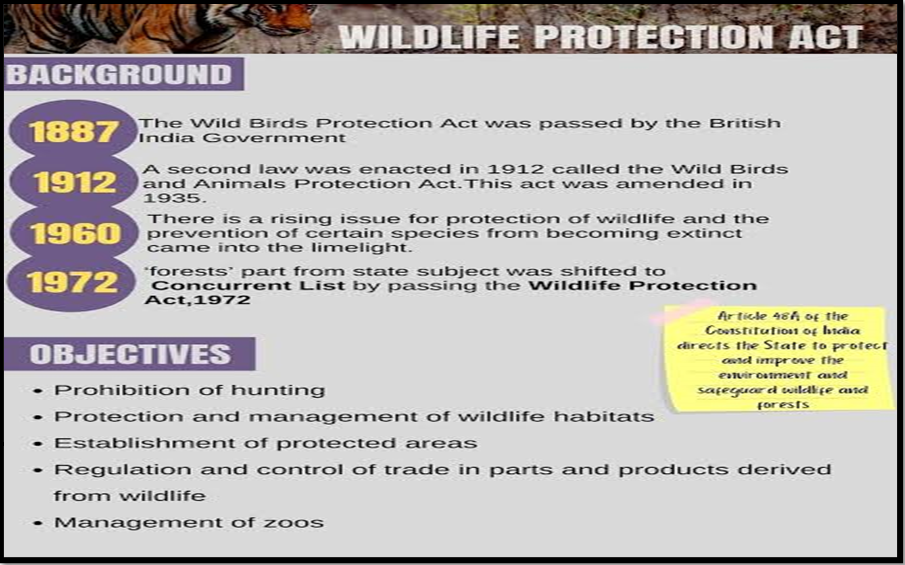SAVING ANIMALS IS ETHICAL, IT’S EVOCATIVE. AND IT’S SMART BUSINESS
Syllabus:
- GS 3: Conservation and Environmental Degradation.
Focus:
- The discourse on animal welfare intersects with ethical considerations, emotional appeals, and pragmatic business strategies.
- The imperative to protect animal lives is not merely a moral obligation but also a strategic imperative for sustainable development.
Ethical Imperative:
- Moral Obligation: Recognizing the intrinsic value of animal lives.
- Strategic Imperative: Balancing ethical concerns with economic interests.
- Societal Attitudes: Businesses shaping perceptions of animal welfare.
- Compassionate Stewardship: Promoting empathy and environmental protection.
- Harmonious Relationship: Balancing human needs with animal welfare.
Source: udlvirtual
Magnitude of Animal Loss:
- Staggering Toll: Over one trillion animals vanish from the planet annually, reflecting a staggering toll on biodiversity.
- Biodiversity Threats: Eighty billion livestock are raised for food consumption, while two million species face extinction threats.
- Exploitation Statistics: Despite conservation efforts, a hundred and fifty million animals fall victim to poaching and trophy hunting.
- Urgent Action Needed: The alarming rate of animal loss highlights the urgent need for concerted action to preserve biodiversity.
- Quantifying Exploitation: Efforts to quantify animal loss underscore the extent of their exploitation and the challenges in addressing systemic issues.
Commodification of Animal Lives:
- Devaluation Consequences: The commodification of animals leads to the devaluation of their lives and the normalization of exploitation.
- Cycle of Exploitation: Viewing animal lives through a lens of commodification perpetuates a cycle of consumption and exploitation.
- Quantification Challenges: The quantification of animal loss in terms of tons consumed underscores the extent of their exploitation.
- Intrinsic Value Diminished: Such commodification diminishes the intrinsic value of animal lives and undermines efforts for conservation and welfare.
- Addressing Systemic Issues: Addressing the commodification of animals requires a shift in societal attitudes and corporate practices towards ethical consumption and responsible stewardship.
Human Responsibility and Sixth Extinction:
- Anthropogenic Impact : Humanity bears responsibility for precipitating the sixth extinction event through anthropogenic activities.
- Ecological Toll: As apex predators, humans have reshaped ecosystems at the expense of fellow sentient beings and the planet.
- Paradoxical Achievements : The drastic decline in wildlife populations, amounting to 60% since 1970, underscores the ecological toll of human actions.
- Interconnectedness Recognition: The Nobel Prize’s association with destructive innovations like gunpowder highlights the paradox of human achievements.
- Call to Action: Recognizing the interconnectedness of all life forms is essential for fostering a more sustainable and equitable relationship between humans and animals.
Expanding the Concept of ‘Kutumb’:
The concept of ‘Vasudev Kutumb’ extends beyond human kinship to encompass all life forms on Earth.
- Transformative Compassion: Personal anecdotes of visiting animal rescue centers exemplify the transformative power of compassion and empathy.
- Exemplary Initiatives: Initiatives like the ‘Star of the Forest’ and Ratan Tata’s animal hospital exemplify efforts to protect vulnerable species.
- Paradigm Shift: Shifting from ‘survival of the fittest’ to ‘protection of the weakest’ reflects a paradigm shift in conservation ethics.
- Shared Responsibility: Embracing a holistic approach to animal welfare fosters a sense of interconnectedness and shared responsibility for preserving biodiversity.
How Saving Animals is Smart Business?
Eco-Tourism Opportunities: Conserving wildlife habitats attracts eco-tourists, generating local revenue through lodging, guided tours, and wildlife viewing.
Corporate Social Responsibility (CSR): Integrating animal welfare into CSR boosts brand reputation, consumer trust, and attracts socially-conscious customers.
Bioprospecting and Biotechnology: Studying animals for unique traits leads to valuable discoveries in medicine and cosmetics, benefiting biotech industries.
Sustainable Agriculture: Prioritizing animal welfare in farming yields higher-quality products, increased demand, and premium pricing.
Conservation Contracts: Collaborating with conservation groups unlocks funding, incentives, and long-term partnerships, benefiting businesses invested in conservation.
Innovation: Researching animal conservation leads to new technologies and products, driving economic growth and competitiveness.
Regulatory Compliance: Addressing animal welfare concerns reduces legal risks, fines, and reputational damage.
Ecosystem Services: Protecting biodiversity ensures essential services like pollination, pest control, and water purification, crucial for agricultural productivity and economic stability.
Supply Chain Resilience: Sustainable sourcing practices mitigate risks related to resource scarcity and social unrest, ensuring long-term stability in business operations.
Corporate Social Responsibility (CSR) and Animal Welfare:
- Ethical Leadership : CSR initiatives should extend beyond human-centric objectives to encompass animal welfare and environmental stewardship.
- Brand Reputation: Aligning CSR with animal welfare presents opportunities for businesses to demonstrate ethical leadership.
- Systemic Solutions: Businesses can leverage CSR to address systemic issues like habitat destruction, wildlife trafficking, and animal exploitation.
- Collaborative Efforts: Embracing a holistic approach to CSR can enhance brand reputation and foster long-term sustainability.
- Holistic Approach: Collaboration across sectors is essential to develop innovative solutions for preserving biodiversity and promoting animal welfare.
Challenges and Opportunities:
- Shift in Attitudes: Overcoming speciesism requires a fundamental shift in societal attitudes and corporate practices.
- Media Influence: Businesses must re-evaluate their strategies and operations to mitigate the adverse impacts of speciesism.
- Innovative Solutions: Media and entertainment industries can play a pivotal role in raising awareness and fostering empathy towards animals.
- Cross-Sector Collaboration: Collaboration across sectors is essential to develop innovative solutions for preserving biodiversity and promoting animal welfare.
- Environmental Stewardship : Upholding the intrinsic value of animal lives is not only ethical but also essential for safeguarding the planet’s ecological balance and ensuring the well-being of future generations.
Conclusion:
The ethical imperative to save animals transcends moral considerations and extends to pragmatic business strategies.
By embracing a holistic approach to CSR and combating speciesism, businesses can contribute to a more sustainable and compassionate world. Upholding the intrinsic value of animal lives is not only ethical but also essential for safeguarding the planet’s ecological balance and ensuring the well-being of future generations.
Source:
Mains Practice Question:
Discuss the ethical, economic, and societal implications of saving animals . Examine how businesses can integrate animal welfare into Corporate Social Responsibility (CSR) initiatives and contribute to sustainable development.




